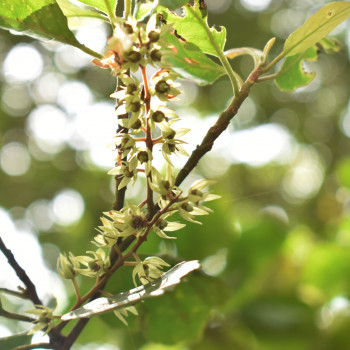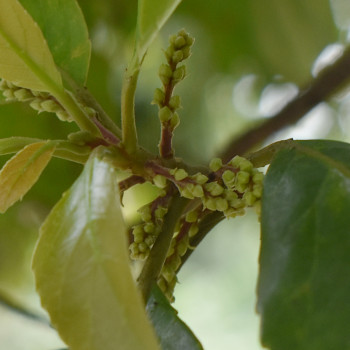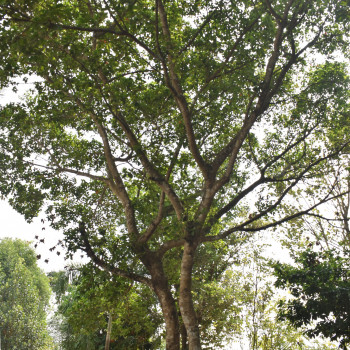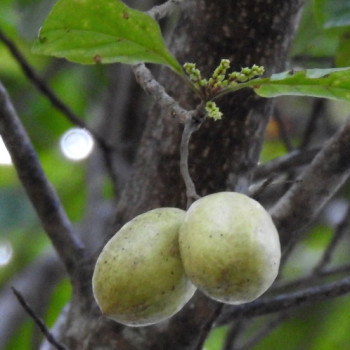Kara
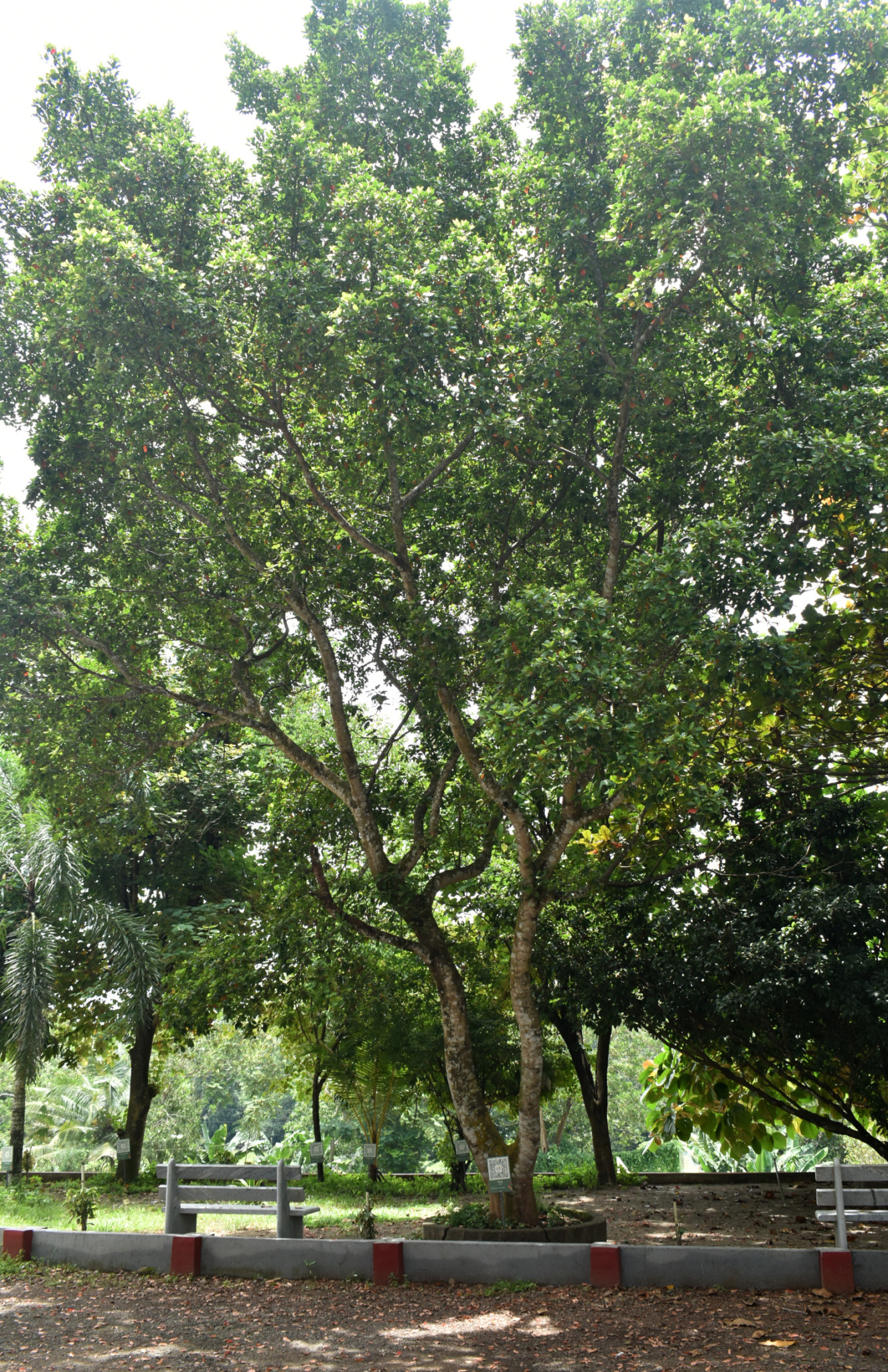
Scientific Name :
Elaeocarpus serratus L.
Synonym(s) :
Elaeocarpus oblongus Gaertn.
Local/Common name(s) :
Kara
Family :
Elaeocarpaceae
Habit :
Tree
Flowering/Fruiting Time :
April-September
Habitat :
Semi-evergreen forests, also in the plains
Endemic :
No
Status (IUCN) :
Distribution :
Indo-Malesia
Nativity :
Indigenous
Uses :
Food
Description (Morphology) :
Trees, to 20 m high, aerial roots on large buttresseses; bark 8-10 mm thick brown, mottled with grey; branchlets, petioles, peduncles and young leaves densely pubescent. Leaves simple, alternate, 5-14 x 2-6.2 cm, elliptic-obovate or elliptic ovate, apex acute, caudate-acuminate or obtusely acuminate, base acute or cuneate, margin crenate-serrate, glabrous, coriaceous; petiole 15-40 mm, slender, pubescent, swollen tipped, with 2 minute glands at tip; lateral nerves 3-8 pairs, pinnate, prominent, intercostae reticulate, slender, prominent, domatia glandular. Flowers bisexual, white, in axillary racemes to 8 cm long. Sepals 5, ovate, pubescent on outside, densely glandulose, valvate. Petals 5, laciniate, inserted round the base of glandular disc. Stamens many, inserted between the glands on the disc; anthers not awned, tipped with hairs. Ovary superior, densely tomentose, raised on torus, 3-celled, ovules 2 in each cell; style subulate, entire. Fruit a drupe, subglobose, green, style persistent; stone tubercled; seed one.


